Go Power Industrial Pure Sine Wave Inverter Charger - 3,000 Watts - 100 Amps - 12V

 Arrives before Christmas
Arrives before Christmas 

- All Info
- Reviews (168)
- Q & A (0)
- Photos
Go Power RV Power Inverter - 34275013
- 3000 Watts
- Pure Sine Wave Inverter
- 12V
- Inverter/Charger/Transfer Switch Functions
- Go Power
- AGM
- Gel
- Lead Acid
- Lithium
- Power Center
- Large Appliances
3,000-Watt inverter charger combines a pure sine wave inverter, converter charger, and automatic transfer switch. Saves space and simplifies installation by consolidating 3 vital components into 1 compact unit. Includes fixed-mount remote.
Features:
- 3-in-1 Unit combines a pure sine wave inverter, converter charger, and automatic transfer switch
- Consolidated system saves space and means you only have to install 1 component
- 3,000-Watt inverter changes your battery's DC output into AC power and sends it to the RV's electrical system
- Pure sine wave technology replicates household AC power, allowing you to run devices safely
- Converter charger changes AC shore power to DC power to quickly charge your batteries
- Multistage charging helps extend battery life
- Transfer switch automatically changes from inverter to shore power when you hook up at the campground
- Included fixed-mount remote lets you monitor and control the inverter charger from inside your RV
- LED indicators show inverter status and fault conditions
- Multiple connection points let you secure cables and external devices to the inverter
- Includes AC input and output terminals, DC input terminals, remote port, and battery sensor port
- Built-in safety features protect your RV's electrical system
- Fuse block installation kit (sold separately) lets you safely connect the inverter charger to your RV battery
Specs:
- Application: 12V battery systems
- Inverter rated power:
- Running (rated) power output: 3,000 watts
- Starting (surge) power output: 4,800 watts
- Voltage:
- Inverter input: 9 - 17 VDC
- Inverter output: 115 VAC
- Charger input: 80 - 140 VAC
- Charger output: 5 - 16 VDC
- Amperage:
- Inverter peak output: 52 amps
- Inverter continuous output: 25 amps
- Charger current input: 18 amps
- Charger current output: 125 amps
- Transfer switch power: 100 amps (2 legs at 50 amps each)
- Operating temperature range: -4 F to 140 F
- Remote cable length: 50'
- Battery sensor cable length: 25'
- Dimensions:
- Inverter charger: 15" long x 11-1/8" wide x 8" tall
- Remote:
- Front: 5-7/8" wide x 3-7/8" tall
- Rear: 4-11/16" wide x 2-11/16" tall x 1-1/4" deep
- Weight: 49.8 lbs
- 3-Year warranty
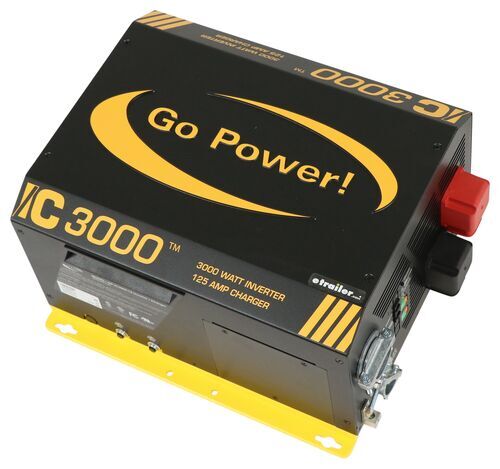
Combining an inverter, converter charger, and transfer switch, the Go Power IC Series 3,000-watt inverter charger puts three essential RV functions into one unit. The compact size takes up less space in your RV and simplifies installation. It lets you convert AC shore power into DC power to charge your batteries, inverts your DC battery output into AC power to power electronics and appliances, and automatically transfers to shore power when available.
Pure Sine Wave Inverter Produces Clean AC Power
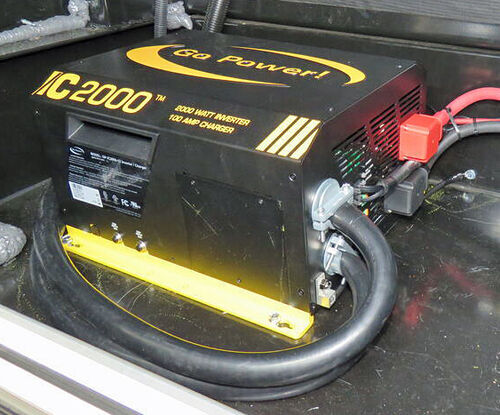
The pure sine wave inverter changes DC output from your RV batteries into AC power and sends it to the electrical system. It creates clean power with low distortion, making it safe, efficient, and perfect for sensitive electronics like computers. Plus, the inverter can generate 4,800 starting watts and 3,000 running watts which is a great fit for larger appliances or multiple devices.
Smart Converter Charger with Automatic Multistage Charging System
The smart converter charger converts AC shore power into DC power to charge your battery bank. If your RV already has a stock converter charger, it will need to be removed to ensure this part of the unit operates properly.
Using a multistage charging system, the converter charger automatically switches voltages while the battery bank charges. This accelerates the charge, but also helps extend battery life by adjusting the voltage during the different modes. It is compatible with sealed/gel, AGM, flooded/wet cell, and lithium batteries. And with the included fixed-mount remote, you can select charging profiles for the different battery types.
Charging Modes
- Bulk: This mode charges at the full rated load for a quicker recharge time. As the name suggests, this is where the bulk of the charging happens. It typically charges the battery to at least 80% capacity.
- Absorption: This mode provides controlled voltage to ensure a full charge. Once the battery reaches between 80% to 90% capacity, the absorption state will kick in and start charging at a regulated voltage. This mode is set to last for 2 hours after the bulk charge is completed.
- Float: Once the battery reaches full charge, this mode maintains a lower voltage to compensate for self-discharge. This reduces battery stress and minimizes gassing and water loss.
- Equalization: On flooded batteries, this mode (which is only accessible with the included fixed-mount remote) activates to prevent stratification and sulfate buildup during extended float cycles. These two issues can damage a battery by causing the accumulation of acid at the bottom of the battery and hardened sulfate crystals on the battery plates. This mode is especially helpful when your battery is going unused during storage.
Automatically Switches to Shore Power
The integrated transfer switch selects the primary source of AC current. The switch inside of this inverter charger has been pre-wired to automatically change from inverter to shore power to conserve battery life. This switch includes (2) 50-amp legs, which allows you to use up to 100 amps by passing through 12,000 watts on a shore power service. The legs are rated at 120V each, but they can be used as a 240V split-phase or 240V dual input if needed. This would be useful if your RV has larger appliances, such as a clothes dryer or oven range. However, if you plan on using an on-board generator and shore power, you still need an external transfer switch to link power to the inverter charger. If you are just utilizing shore power, you only need this unit since you are switching between two sources.
To prevent electrical interruptions, the time delay circuit board allows the alternate power source to stabilize before a transfer occurs. Additionally, since the switch only accepts one active source, it protects your electrical system from dangerous backfeed that can damage your equipment.
Fixed-Mount Remote

The included fixed-mount remote lets you monitor and control the inverter charger from inside your RV. It includes a digital display that shows the voltage, output power, status, temperature, and charging activity. You can also customize settings like your battery profile, charge rate, and more. And it has a power button that lets you turn the inverter charger on and off.
Connections and Status Lights

The inverter charger includes AC input and output terminals that connect to your AC panel and shore power input. It has DC input terminals which connect to your batteries. Additionally, it has ports for the fixed-mount remote and battery sensor. It also has 2 LEDs that show fault conditions and operation mode. Lastly, it has a power switch that controls the inverter charger.
Safety Features
The system includes a number of safety features. It offers protection from over/under voltage and overloading. The inverter also uses a heat sink process to protect from extreme temperatures, and an internal cooling fan removes excess heat from the unit.
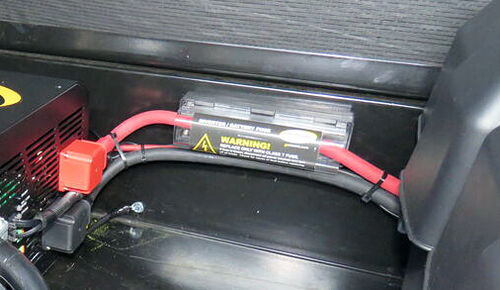
For additional safety, installing a fuse between the battery bank and the inverter charger will protect your equipment from power surges. The Go Power 400-amp fuse block (sold separately) works with this unit and uses a slow blow time-delay feature to withstand surge current. This means it can handle short surges over 400 amps without blowing the fuse, which is great for devices with motors that require more energy to start.
Battery Temperature Sensor Adds Additional Battery Protection

The battery temperature sensor protects the battery bank from large temperature fluctuations. As the inverter charger experiences changes in temperature, the sensor compensates for those changes by adjusting the voltage during charging to help extend the life of your batteries. This protects from overcharging in hot temperatures and undercharging in cold temperatures. The voltage adjustments also ensure that you are getting the most from your charge.
How It Installs
The inverter charger mounts inside your RV in a dry location with ventilation. It should be installed in close proximity to the battery bank, but not in the same compartment. The DC terminals are wired to the battery bank. There are several ways to connect the inverter section to your RV's electrical system, but this will depend on your rig and how you want to use your inverter. Also, the temperature sensor installs to the negative battery terminal and plugs in the battery temperature port on the inverter charger.
75013 Go Power! Industrial Pure Sine Wave Power Inverter Charger - RV Ready - 3000 Watts - 12 Volt
Replaces Go Power GP-IC-3000-12-PKG
Replaces Go Power 80508REVA
Replaces Go Power 80508REVB
Installation DetailsCalifornia residents: click here
Customer Satisfaction Score:
96% were satisfied with this product
4% of customers were not satisfied
- Arrived Damaged
- Product did not meet expectations
- Wrong item was ordered
Ratings & Reviews
4.6
168 reviews
See what our Experts say about this Go Power RV Power Inverter
- Can Inverters Be Used With Progressive Dynamics Power CentersYes, you can use a 3000w Inverter with transfer switch like part # 34275013 and still use it with your Progressive Dynamics Mighty Mini AC/DC Panel and Converter/Smart Charger # PD4060K. The inverter is going to require you to have two separate AC bus bars. Since the # PD4060K only has one you'll need to get an AC subpanel. Your AC in on the inverter will connect to a circuit breaker on the main panel ( # PD4060K) and the AC out will go to a circuit breaker on the sub panel. When connected...
view full answer... - Is Go Power Industrial Pure Sine Wave Inverter Charger Compatible with Lithium BatteriesHey Tony, thanks for reaching out! The Go Power Industrial Pure Sine Wave Inverter Charger # 34275013 is compatible with lithium batteries. For protection, it's best to use the 400 Amp Fuse Kit # 342GPDCKIT5 to protect the inverter and battery bank.
view full answer... - Wire Gauge to Use Between 3000 Watt Inverter and AC PanelFor a 3,000 watt inverter like the # 34275013 it's recommended to use 1 or 0 AWG between it and the panel. Solid or stranded is fine.
view full answer... - Can the Go Power Industrial Pure Sine Wave Inverter Charger # 34275013 be Used with Lithium BatteryThe Go Power Industrial Pure Sine Wave Inverter Charger # 34275013 that you referenced does have the ability to charge lithium batteries like you have. I would recommend using the custom settings like you mentioned to match just what the battery manufacturer recommends.
view full answer... - Total AC Power Output Of Go Power Industrial Pure Sine Wave Inverter Charger # 34275013 The Go Power Industrial Pure Sine Wave Inverter Charger # 34275013 has a running rated output of 3,000watts with a surge power output of 4,800watts. This is the total amount of power that can be distributed across both 120volt legs for your power center.
view full answer... - Replacement for Dimensions Unlimited Inverter Charger on Winnebago TourI recommend the Go Power Industrial Pure Sine Wave Inverter Charger - 2,000 Watts # 34280055 to replace your Dimensions Unlimited Inverter Charger. Just like your Dimension model, this will allow you to select the correct charging profile for sealed/gel, AGM, and flooded/wet cell batteries. I know you're not adding lithium batteries but this also works with lithium if you upgrade in the future. This is the 2,000W version but we also have the 3,000W # 34275013 if you're replacing the 3,000W...
view full answer... - Recommended LiFePo4 Batteries and Pure Sine Wave Inverter Charger for a 5th Wheel TrailerHey Alvin, thanks for the information. We've got a couple of options to upgrade your AGM batteries to LiFePo4 ones. I have listed them below: Go Power Sun Cycle Advanced Lithium RV Battery - LiFePo4 - Bluetooth - Group 24 - 12V - 100 Amp Hour item # GP99QR Go Power Lithium RV Battery - Deep Cycle - LiFePO4 - Group 31 - 12V - 100 Amp Hour item # 34282738 You're definitely going to need to replace your Freedom 458 Inverter Charger as it's not rated for Lithium batteries. I recommend the...
view full answer... - Recommended Solar Set Up for a Refrigerator to Be Ran Off Grid In order to operate your refrigerator off solar power, when you're off grid or traveling, you're going to need probably 4 total batteries with 200-amp hours per battery to accomplish this. This will supply you with a bank of roughly 1200 amp hours of power. We don't offer a 200 amp hour battery but do have 100 Amp Hour item # GP99QR and 300 Amp Hour item # GP26QR lithium batteries. I recommend the Go Power Solar AE-4 All Electric System with MPPT Solar Controller - 760 Watt Solar Panels...
view full answer... - Adding Solar Package To 2019 Jayco Whitehawk 29RLHello Nancy, thanks for reaching out. Sounds like you are on the right track here. The Go Power Overlander Solar Charging System # GP39MR is a great choice for a starter solar system. Solar panels will work to keep your batteries topped off but it cannot be used to directly power appliances like a heater or fireplace. For that you will need a battery bank and an inverter. For that what I recommend is the Go Power Industrial Pure Sine Wave Inverter Charger # 34275013. This has a built...
view full answer... - Is there a 3,500 Watt Progressive Dynamics Inverter w/ a Transfer Switch?Hey Danielle! Our highest wattage Progressive Dynamics Inverter with a Transfer Switch is item # PD64FR, which tops out at 2,000 watts. It's only rated for 30 amps and is probably the one you saw. Our highest wattage inverter with a transfer switch is the Go Power Industrial Pure Sine Wave Inverter Charger item # 34275013. This one is rated for 3,000 watts and 100 amps. The Go Power item # 34275013 works with set ups like the Go Power Solar AE-6 All Electric System with 2 MPPT Solar Controllers...
view full answer... - What Inverter Do I Need For My Trailer? It Is Already Prepped For OneHey Niel, The part you were looking at, # PD4575K18LS8 is a coverter/charger which turns AC power into DC power while something like an inverter # 34275013 is going to turn DC power into AC. Your camper most likely already has a converter from the factory, but for an inverter to use 110v outlets when off grid with no shore power. There really is not a way to know exactly what is needed without figuring out what size you need. Typically you need to figure out the total wattage used in...
view full answer... - Is It Possible to Run an Air Conditioner and 12v Fridge Solely on Solar and Battery PowerRunning your A/C solely off of solar and battery power is not recommended. Due to the amount of power drawn by the A/C, it is near impossible to run with just solar and battery power and the new A/C's are no exception to this. At minimum we recommend a battery bank with at least 700 amp hours. You'll need a solar panel kit like the Go Power Solar AE-6 All Electric System with 3 MPPT Solar Controllers # 342-75011 or larger to recharge your batteries. You'll also need an inverter like the...
view full answer... - What Pure Sine Wave Inverter for 5th Wheel with Transfer Switch for Generator/Shore PowerFrom what you have described as your goal, my suggestion is one of two primary options, and I will note here that with either option I suggest you have a battery bank of at least 400 AH when fully charged. This first option is not an automatic transfer switch option but I want to provide this to you for your additional knowledge because it is rather straight forward for installation and a little less cost as well. Option 1: The most straight forward installation to provide you an output...
view full answer... - Solar Power Recommendation For Powering A 45' Heartland Milestone 5th Wheel TrailerWhile solar power is very helpful for RVing off the grid, they aren't quite at a level to power everything unless you install a whole farm worth of panels. Solar power isn't directly powering your appliances, but instead just recharging your battery bank. Both of the Go Power Solar Systems # 342-75010 and # 34282185 you referenced will require 4-6 batteries each. Both systems are recommended for 159aH in replenishment a day (with peak conditions). Pure Sine Wave Inverters like the Go...
view full answer... - Wiring 50 Amp Furrion Automatic Transfer Switch With Inverter as Primary SourceSo with the Go Power Industrial Pure Sine Wave Inverter Charger # 34275013 as the primary source, what you will do is wire the shore power to Input 2 and the Inverter to Input 1 on the Furrion Automatic Transfer Switch - 50 Amp # F50ATS.
view full answer... - Parts Needed to Install Solar on 2016 Jayco Pinnacle 5th WheelHey Paul; the answer to your question depends on what you want to do exactly. It also depends on what your trailer already has on it. I'm going to assume the 2016 Jayco Pinnacle you put in our fitguide is the trailer you have. I'm also going to operate off of the assumption that it has the solar prep in place. If it doesn't, you will need additional wires to run to everything. If you just want to charge the batteries you will need your 200W solar panel # 34282182 and feet # 34272708 and...
view full answer... - Is The Go Power 570 Watt Solar Extreme Charging System Available With a MPPT Charge Controller?Since Go Power does not offer a Solar Extreme Charging System like # 34282185 with a 30amp MPPT Controller # GP72RR you would need to get all the components separately and build your own system. Here is a list of the parts needed. Go Power Overlander Expansion Kit # 34282182 Qty- 3 30AMP Go Power MPPT Solar Charge Controller # GP72RR Bluetooth Remote Display for Go Power MPPT Solar Charge Controllers # GP37MR 3,000 Watt Go Power Industrial Pure Sine Wave Inverter Charger # 34275013 Go...
view full answer... - Is It Possible To Run an A/C and Other Appliances Solely on Solar PowerI HAVE AN ALTERNATE SOLUTION FOR YOU, BUT THE Go Power Solar AE-4 All Electric System with MPPT Solar Controller # 342-75010 IS NOT GOING TO ACCOMPLISH WHAT YOU ARE NEEDING. RUNNING YOUR A/C SOLELY OFF OF SOLAR AND BATTERY POWER IS NOT RECOMMENDED. DUE TO THE AMOUNT OF POWER DRAWN BY THE A/C, IT IS NEAR IMPOSSIBLE TO RUN WITH JUST SOLAR AND BATTERY POWER. AT MINIMUM WE RECOMMEND A BATTERY BANK WITH AT LEAST 700 AMP HOURS. YOU'LL NEED A SOLAR PANEL KIT LIKE THE Go Power Solar AE-6 All Electric...
view full answer... - Does Go Power AE-6 System Include an Inverter?The Go Power # 342-75011 Solar Kit that you referred to does not include an inverter. It collects power, from included solar panels, and charges your trailer batteries. The 12-volt circuits on your existing power center (pictured) are powered by your batteries. The 120V AC circuits on your power center are powered by either plugging into a campground pedestal (shore power) or plugging into a generator. You could purchase a stand alone inverter like the Go Power # 34275013 to provide...
view full answer... - Parts Needed To Install The Go Power Industrial Pure Sine Wave Inverter # 34278157 To install the Go Power Industrial Pure Sine Wave Inverter - 3,000 Watt - 12V # 34278157 you'll need some wiring for both the AC output and DC input, a 400 amp fuse, and a 20amp GFI outlet. For the DC input you can use the Installation Kit for Go Power Inverters # 342GPDCKIT5, as it comes with the correct gauge wire and fuse that you'll need for the DC side of this installation. For the AC side you'll need some wire, three ring terminals, and a GFCI outlet to complete the AC side of...
view full answer... - Inverter and Lithium Batteries Needed to Power a Mobile HouseI spoke with our contact at Go Power to get some better insight on this for you. For your inverter, you will need the Go Power Industrial Pure Sine Wave Inverter Charger - 3,000 Watts, part # 34275013. For the installation kit, you will need the Installation Kit for Go Power Inverters - 400 Amp Fuse - 12V and 24V, part # 342GPDCKIT5. Finally, for the batteries, you will need two of the Go Power Sun Cycle Solar RV Battery - Lithium - 12V - 250 Amp Hour - LiFePO4 - Group 4D, part # 34282740. This...
view full answer... - Recommended Power Inverter, 50 Amp Transfer Switch and Charger For Solar Upgrade On RV CamperI recommend using the Go Power Industrial Pure Sine Wave Inverter Charger # 34275013. This will reduce all the components into one system by combining your transfer switch inverter and converter/charger into one unit. You will be able to wire in your 50 amp circuit with this unit. This will mean less wiring and space required for your setup and only one panel to monitor everything in your system. On a 50 amp RV circuit you have 2 separate 120 volt holt circuits that feed into the RV....
view full answer... - Powering A Small Fridge While On A Boat To charge the battery while the boat is running you would need to install solar panels which depending on your boat might not be an option. Typically most people run multiple batteries in parallel to run their appliances/equipment. Since you'll be running a fridge I recommend a deep cycle battery like the Bright Way Deep Cycle RV or Marine Battery - AGM - 12V - 110 Ah - Group 30H Item # BRW44FR. Deep cycle batteries are designed to provide a steady amount of current over a long period of...
view full answer... - Is There a Transfer Switch That Can Take Input From Shore Power, Generator and Inverter Power? With a transfer switch like the Go Power Automatic Transfer Switch # 342GPTS you would have to use a second Transfer Switch # PD5110010Q to connect 2 of the three sources. Your shore power cord could also be used with a separate plug in for a generator connection(This is how several RV's are from the factory), as you only have 2 inputs. Since there is not a single unit that can take power from 3 sources and have one output. We have the Go Power Industrial Pure Sine Wave Inverter Charger...
view full answer...
Do you have a question about this RV Power Inverter?
Info for this part was:










At etrailer.com we provide the best information available about the products we sell. We take the quality of our information seriously so that you can get the right part the first time. Let us know if anything is missing or if you have any questions.












































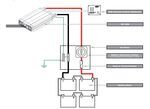
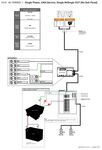

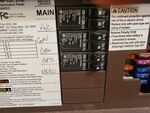


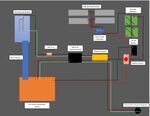
Thank you! Your comment has been submitted successfully. You should be able to view your question/comment here within a few days.
Error submitting comment. Please try again momentarily.